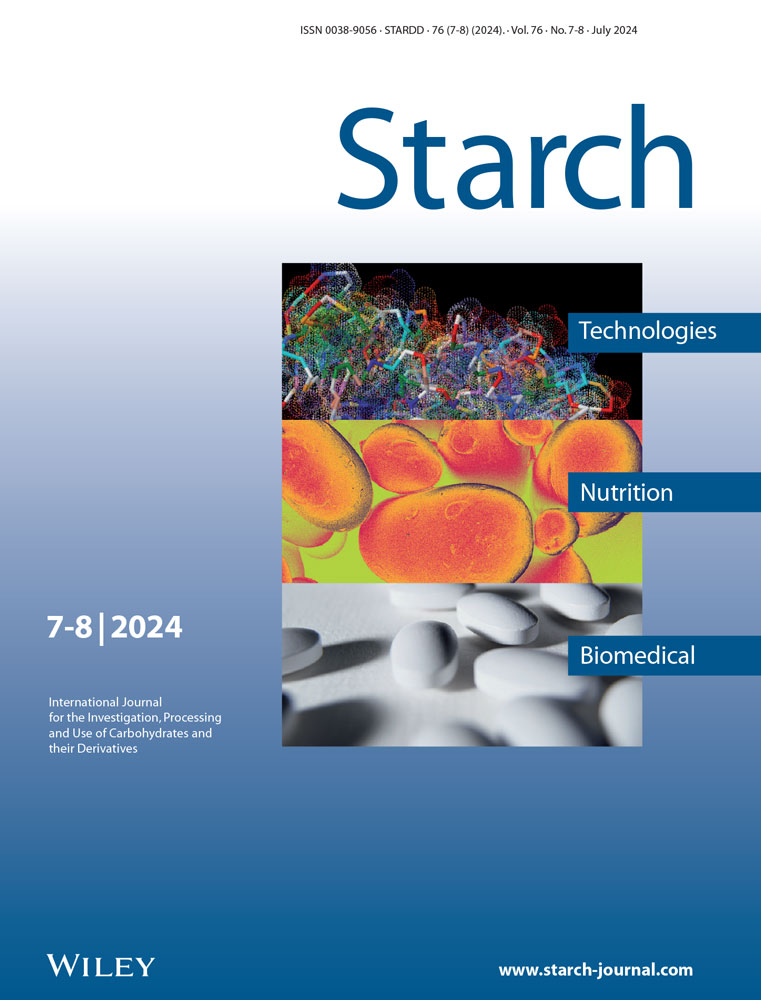Starch Gelatinization Behavior: The Impact of Granular Structure
Abstract
This study evaluates wheat, corn, and cassava native starches. Morphological features of the starch granule's surface reveal peculiar granule characteristics. Wheat starch granules are the largest, with 20.83 µm mass median diameter, followed by corn, 13.14 µm, and cassava, 12.37 µm. Nonetheless, cassava and corn starches have the lowest polydispersity and greater surface area average. Corn starch shows more resistance to the gelatinization process when observed. Complete granular disruption and gelatinization occurring at 65–75 °C for wheat, 75–85 °C for cassava, and 85 °C for corn. The curves of viscosity evidence the assertion that the starches from cereals gelatinize at higher temperatures than starch from the tuber. Swelling power indicate that cassava starch held more water, whereas IFTR spectroscopy reveals a more ordered structure when compared to wheat and corn starches. However, corn starch has the highest values of Tonset, Tpeak, and Tendset, with enthalpy of gelatinization of 12.73 J g−1, which can be related to the amylose content of 24.25% and mainly to 0.2% of starch damage. The almost negligible amounts of damaged starch present in corn starch indicate the absence of granule fragments capable of increasing water absorption and decreasing the birefringence of the system.
Conflict of Interest
The authors declare no conflict of interest.
Open Research
Data Availability Statement
The data that support the findings of this study are available from the corresponding author upon reasonable request.




